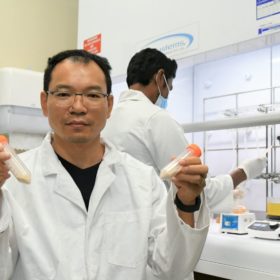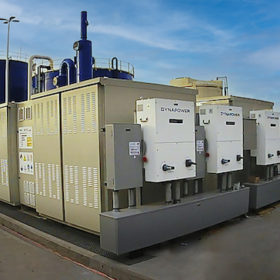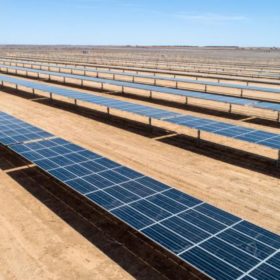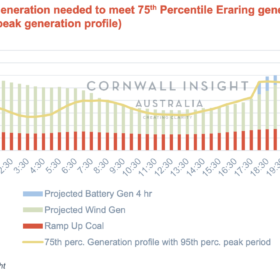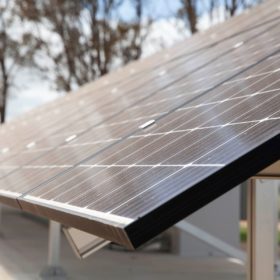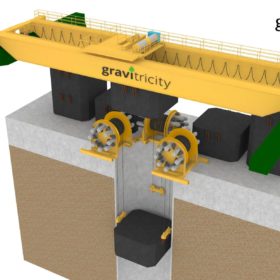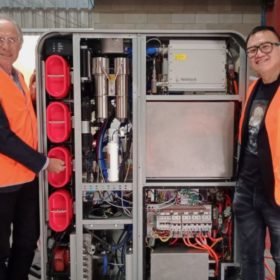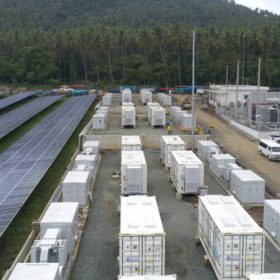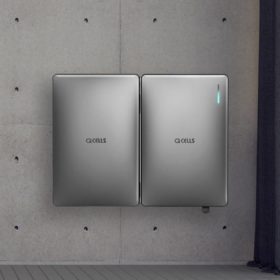Organic battery progress brings Adelaide researchers tantalisingly close to full biodegradability
The realisation of biodegradable batteries is a step closer thanks to research from South Australia’s Flinders University, which has developed a 2.8V organic polymer battery. While this battery was made from synthetic polymers, research lead Dr Zhongfan Jia told pv magazine Australia the team’s future iterations will source “materials directly from nature” saying this promises to reduce waste and reliance on mined materials and could have novel applications in fields like biotech.
Redflow’s redox flow batteries to be assessed by Underwriters Laboratories
Underwriters Laboratories, a US non-profit standards development organisation, will carry out research into the operating and safety profile of Queensland company Redflow’s redox flow batteries under nominal and off-nominal conditions.
Chinese state grid unveils plans for 100GW battery fleet
China’s largest state-owned grid operator and power utility plans to deploy the world’s biggest battery fleet and almost quadruple its pumped hydro storage by 2030, thus supporting the nation’s switch to renewable energy sources.
Forrest declares work to begin immediately on 1.2GW green energy hub in Queensland
Construction is set to commence immediately on the first stage of a 1.2GW hybrid wind, solar and battery energy storage project in Central Queensland following Australian iron ore magnate Andrew Forrest’s announcement that he has invested $3 billion in the ‘shovel ready’ development.
“I’m an All-Pro [coal plant]… You’ll never be more than a replacement player!”
The potential early retirement of Eraring has been the talk of the market the past week. Many of our customers have been asking what the impacts of the retirement might be on the acceleration or development of new renewable capacity in NSW and potential storage projects. In this Chart of the week, we look at the effect of the lost generation from Eraring and how that capacity might be filled.
New rules allow distributors to roll out standalone power systems in NEM
The deployment of standalone power systems in the National Electricity Market is expected to accelerate after the Australian Energy Market Commission this week published new rules allowing distributors to install the renewables-based technology in the five market jurisdictions.
Gravitricity to build 4 MWh gravity-based storage facility
British start-up Gravitricity secured funds from the UK Department of Business Energy & Industrial Strategy (BEIS) to build its second gravity-based storage project. The feasibility study is expected to be finalised by the end of this year.
Australian hydrogen battery technology to be tested in UK
Australian technology company Lavo’s innovative energy storage system – based on storing green hydrogen in a patented metal hydride – has attracted the attention of the UK government which has provided financial backing to allow for a demonstration facility to be installed in England’s northwest.
Philippines’ largest battery comes online at 120MW solar park
The 40MW/60MWh Alaminos Energy Storage system is now connected to the 120MW Alaminos solar park. Both facilities were built by renewable energy developer AC Energy.
Q Cells offers 15 year warranty on ‘sleek’ new home battery, an Australian first
The latest home battery system from Q Cells, owned by South Korea’s Hanwha Solutions, will the “first to market” to provide a standard 15 year product warranty. The Q.HOME CORE will be available in Australia from March.
